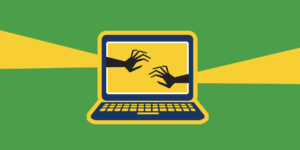Women, life, freedom. Three words, a revolution. Indeed two, because history repeats itself. We are evidently talking about the revolutionary movement of Iranian women after Mahsa Amini’s death on September 16th.
According to the latest medical report from Tehran, Mahsa Amini died of illness and not from beatings, despite the family having declared that the girl was healthy and despite the visible photographic evidence (bleeding ears and bruises around the eyes) of hard-hitting. The story began on 13 September when Mahsa Amini, a 22-year-old Kurdish woman, was stopped in a park in Tehran by the so-called “religious police” or “moral police” because she was not wearing the veil correctly, that is, not completely covering her hair. The police took her to jail, probably for a moral re-education operation. After a few hours, however, she was taken by an ambulance to the hospital, where she ended up in a coma and died three days later.
From there, women’s protests broke out, in which men also participated, in the capital and other cities of Iran against the “religious police” and for freedom of expression. But what is the Gasht-e Ershad, the “religious” moral police that controls Islamic values in Iranian society? And is it true that not covering your hair is a transgression of the teachings of the Koran? No. In the Koran, the hijab is mentioned and modest clothing is recommended for both women and men, but it is never expressly stated that women should cover their hair. Who established this norm then? Obviously, the men, the religious authorities who read the Koran and interpret it in Islamic law, the Shari’a. And here is the role of the Gasht-e Ershad, the “religious” moral police who control Islamic values in Iranian society.
This body for the protection of social order and morality was established in the twenty-first century in various Islamic states. It was firstly established in Saudi Arabia in 1921, and replaced the figure of Mutassim, who starting from the Middle Ages, had been the person in charge of civil order in bazaars, including women’s clothing. In Iran, however, the Gasht-e Ershad and the obligation for women to wear the hijab only came in 1979 with the establishment of the Islamic Republic. In fact, 1979 was the year of the first women’s uprisings against the imposition of the veil and in favor of freedom of expression, which unfortunately we see repeated today, albeit with different triggering causes. From 1926 to 1941, Iran actually experienced a period of Westernization aimed at promoting the industrialization of the country, and such as to force citizens to wear ‘Western’ and non-traditional clothes.
From 1941 to 1979, the Iranians lived the only period in which they were free to dress as they preferred in the West or in the traditional way. In 1979 the Islamic Republic was established, which began to impose the veil in government offices. The obligation to wear the veil in public became Islamic law in 1984, when the Islamic Consultative Assembly approved the penalty of 72 frustrations for those who did not observe this law. Over the years, other penalties have been added such as fines, imprisonment and attempts at re-education (as it was initially for Mahsa Amini). In this case, women are only released if a male relative acts as guarantor and signs for their release.
The obligation of the veil and the consequent penalties and sanctions are still valid today, and are not only the clear reason for the current riots (which have seen the killing of many other young women), but also the tug-of-war between the government and civil society. In fact, women’s rights and the way they dress appear to be the government’s first tool, by abuse and coerciveness, to keep the population under control. The population that actually protests, not against the Islamic religion, but against Islamic fundamentalism as a means of control and propaganda, consists of people of diverse genders, ethnicities, and religions. It must be borne in mind that the Iranian government and population are quite distinct: just think that the population has an average age of 32, and that a large part of it does not vote in the 1979 referendum which proclaimed the Islamic Republic. Yet, this Republic suffers every day and has been protesting against it for decades.
We strongly hope that the Iranians will finally be able to see fundamental rights recognized such as freedom of expression and the secularization of their country, Iran, rich in history, traditions, and culture.
The slogan “women, life, and freedom” gave a new vigorous atmosphere compared to previous protests. It is a slogan that challenges a patriarchal system and that goes against discriminatory laws of the Islamic Republic, especially regarding gender inequalities and equal rights. The centrality of women’s discourse and the sensitivity of the Iranian people towards the image of women, as well as the awareness of regulations that are no longer tolerable in Iranian society, have given greater critical weight against the entire socio-political system.
Featured image by: SAFIN HAMED//GETTY IMAGES






